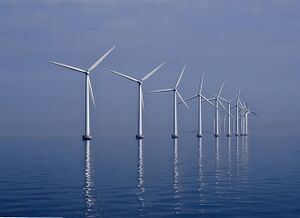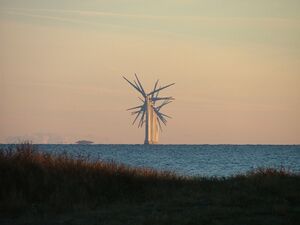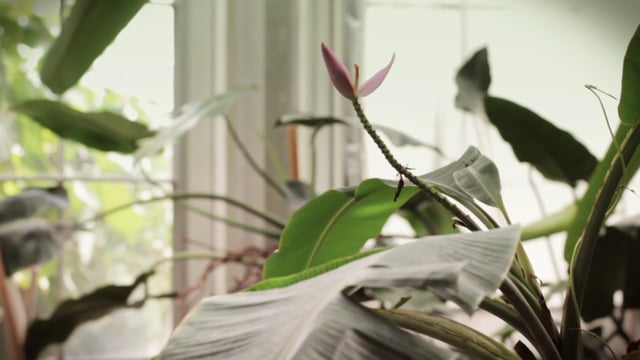
 European nations must end repression of peaceful climate protest, says UN expert, theguardian.com (Feb 28, 2024)
European nations must end repression of peaceful climate protest, says UN expert, theguardian.com (Feb 28, 2024)  The Beyond Oil and Gas Alliance now has 10 core members (Costa Rica, Denmark, France, Greenland, Ireland, Portugal, Quebec, Sweden, Wales, and Washington State), two associate members (California and New Zealand), and five "friends of BOGA" (Chile, Fiji, Finland, Italy, and Luxembourg)., beyondoilandgasalliance.org (Nov 16, 2022) — BOGA is an international alliance of governments and stakeholders working together to facilitate the managed phase-out of oil and gas production, led by the governments of Denmark and Costa Rica
The Beyond Oil and Gas Alliance now has 10 core members (Costa Rica, Denmark, France, Greenland, Ireland, Portugal, Quebec, Sweden, Wales, and Washington State), two associate members (California and New Zealand), and five "friends of BOGA" (Chile, Fiji, Finland, Italy, and Luxembourg)., beyondoilandgasalliance.org (Nov 16, 2022) — BOGA is an international alliance of governments and stakeholders working together to facilitate the managed phase-out of oil and gas production, led by the governments of Denmark and Costa Rica Denmark, Germany, Belgium and the Netherlands come together to make the North Sea a "green power plant", The Daily Alternative (Jun 15, 2022)
Denmark, Germany, Belgium and the Netherlands come together to make the North Sea a "green power plant", The Daily Alternative (Jun 15, 2022)
Networks and sustainability initiatives[edit | edit source]
- Gaia Trust, charitable entity supporting sustainability projects, especially the ecovillage movement.
Visions[edit | edit source]
The Next Denmark, alternativet.dk
Cohousing[edit | edit source]
Sættedammen is a cohousing community in Denmark. Established 1972, it is the world's first community defined as cohousing, following a path similar to the founders of Bryn Gweled Homesteads in the US 1940. The membership comprises approximately 60 adults and 20 children in 35 households. Sættedammen is an open, non-dogmatic community, based on social activities (various interest groups, a daily common dinner, common celebration of holidays and cultural events).
Cohousing is an intentional, self-governing, cooperative community where residents live in private homes often clustered around shared space. The term originated in Denmark in the late 1960s. Families live in attached or single-family homes with traditional amenities, usually including a private kitchenette. As part of the communal orientation, shared spaces typically feature a common house, which may include a large kitchen and dining area, laundry, and recreational spaces. Walkways, open space, parking, playgrounds and gardens are common examples of shared outdoor spaces designed to promote social interactions. Neighbors also often share resources like tools, babysitting and creative skills.
Hundreds of cohousing communities exist in Denmark and other countries in northern Europe. W
Community energy[edit | edit source]
According to Renewables First, the proportion of energy generated through community-owned production amounts to 86 percent in Denmark. When communities take energy generation into their own hands, it connects the user to the source.[1]

The 140% Renewable Energy Island of Samsø. The small island of Samsø has reduced its carbon footprint by 140%[2] in the past decade. In 1997 the Danish government held a competition. They challenged contestants to convert their energy supply to 100% renewable energy within a 10 year period.
The small island of Samsø, a 20x6 mile islet nestled between the hustle and bustle of Copenhagen's island, Zeeland, and the mainland Jutland won the bid. It is only accessible by ferry and has no original power plants of its own. This combination made Samsø an ideal candidate for Eco-Revolution.[3]
Energinet, real-time overview of Denmark's power sector
Solar energy: Denmark reached its year 2020 government goal of 200 MW solar cell capacity in 2012, and has 500 MW solar capacity in 90,000 private installations as of 2013. Danish energy sector players estimate that this development will result in 1000 MW by 2020 and 3400 MW by 2030.[4]
wikipedia:Wind power in Denmark
Climate action[edit | edit source]
Denmark's green house gas emissions per dollar of value produced has been for the most part unstable since 1990, seeing sudden growths and falls. Overall though, there has been a reduction in gas emissions per dollar value added to its market. It lags behind other Scandinavian countries such as Norway and Sweden.[5]
About ProjectZero, Sonderborg
Ethical consumerism[edit | edit source]
Buy Nothing Day (Danish), Buy Nothing Day (English)
Sustainable transport activism[edit | edit source]
Smart Mobility Project (Danish), Aarhus
Waterways: The only manmade waterways in Denmark are some tourist canals, like the canals in Copenhagen and the Odense Canal. There is also a 160 km route through the Limfjorden in northern Jutland linking the North Sea to the Kattegat.[6]
Cycling activism[edit | edit source]
Bicycling in Denmark is a common and popular recreational and utilitarian activity. Bicycling infrastructure is a dominant feature of both city and countryside infrastructure with bicycle paths and bicycle ways in many places and an extensive network of bicycle routes extending more than 12,000 kilometres (7,500 mi) nationwide (in comparison Denmark's coastline is 7,314 kilometres (4,545 mi)). As a unique thing, Denmark has a VIN-system for bicycles which is mandatory by law. Often bicycling and bicycle-culture in Denmark is compared to the Netherlands as a bicycle-nation.[7]
- Cycling Embassy Of Denmark
- Wikipedia:Cycling in Denmark, Danish National Cycle Routes
- Rent a city bike in Odense with your mobile
Education for sustainability[edit | edit source]
Food activism[edit | edit source]
Ecological agriculture and production is significant on Samsø, with a broad network of cooperating associations. It comprise farming of a large variety of vegetables, grains and fruits, livestock meat and products (lambs, sheep, yarn, cows, pigs, horses, donkeys, goats, chickens, eggs), a dairy, a brewery, restaurants and cafés, candy production, permaculture and forest garden experiments. There are several plans for extending the overall ecological production and broaden the industry (a slaughterhouse, orangery, forest gardens and education), with a wish for creating more jobs and stimulate settlements on the island.[8]
Urban sustainability[edit | edit source]
About Denmark[edit | edit source]
Denmark (Danish: Danmark, pronounced [ˈtænmɑk] ) is a Nordic country in the south-central portion of Northern Europe. It is the metropolitan part of and the most populous constituent of the Kingdom of Denmark, a constitutionally unitary state that includes the autonomous territories of the Faroe Islands and Greenland in the North Atlantic Ocean. Metropolitan Denmark is the southernmost of the Scandinavian countries, lying south-west and south of Sweden, south of Norway, and north of Germany, with which it shares a short border.
As of 2013, the Kingdom of Denmark, including the Faroe Islands and Greenland, had a total of 1,419 islands greater than 100 square metres (1,100 sq ft) in area; 443 of these have been named and 78 are inhabited. Spanning a total area of 42,943 km2 (16,580 sq mi), metropolitan Denmark consists of the northern part of the Jutland peninsula and an archipelago of 406 islands. Of these, the most populated island is Zealand, on which the capital and largest city, Copenhagen, is situated, followed by Funen, the North Jutlandic Island, and Amager. Denmark has flat, arable land, sandy coasts, low elevations, and a temperate climate. It had a population of 5,971,110 (1 June 2024), of whom 767,000 live in Copenhagen (1.9 million in the wider area). Denmark exercises hegemonic influence in the Danish Realm, devolving powers to handle internal affairs. Home rule was established in the Faroe Islands in 1948 and in Greenland in 1979; the latter obtained further autonomy in 2009.
A highly developed country, Danes enjoy a high standard of living, with the country performing at or near the top in measures of education, health care, civil liberties, democratic governance and LGBT equality. Denmark is a founding member of NATO, the Nordic Council, the OECD, OSCE, and the United Nations; it is also part of the Schengen Area. It maintains close political, cultural, and linguistic ties with its Scandinavian neighbours, with the Danish language being partially mutually intelligible with both Norwegian and Swedish.
Near you[edit | edit source]
Copenhagen - Freetown Christiania
See also[edit | edit source]
References
- ↑ @shareable, Oct 26, 2021
- ↑ http://www.travelblog.org/Europe/Denmark/Region-Midtjylland/Sams-/blog-440546.html
- ↑ http://www.moneyweek.com/investments/commodities/how-denmark-is-leading-the-way-in-renewable-energy.aspx
- ↑ wikipedia:Energy in Denmark#Solar
- ↑ wikipedia:Denmark#Environment
- ↑ wikipedia:Transport in Denmark#Waterways
- ↑ wikipedia:Transport in Denmark#Cycling
- ↑ wikipedia:Samsø#Sustainable production and agriculture




